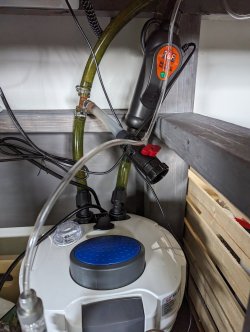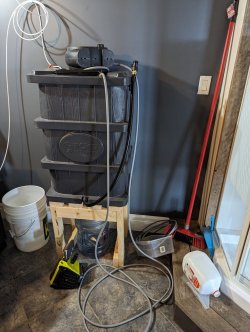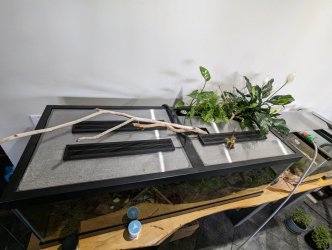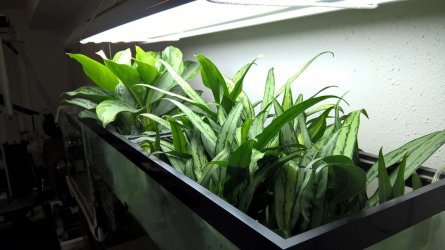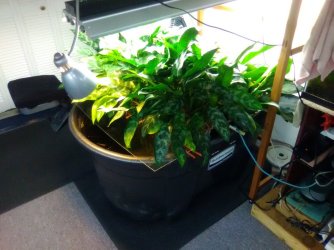I've been following the two or three threads on using house/terrestrial plants and avoiding water changes. I think we need to set the record straight on these issues.
First, water changes remove all "pollutants" in the water, something no filter and no plant can do. As just one example, pheromones and allomones have to be removed by removing water. So your fish are being sacrificed to save a once-a week water change? Something is wrong with that logic.
Second, this removal of ammonia occurs with aquatic plants and especially the fast growers. They take up ammonia faster than do the nitrifying bacteria (studies have proven this). And there is no nitrite and thus no nitrate resulting. A cover of surface plants are far easier to maintain that terrestrial plants growing out of the tank. I would not want to enter the fish room every morning to find more dead and dry fish on the floor because they jumped during the night. And all fish will jump, this occurs with Corydoras and loaches too. Keeping the tank covered, something that so far has seemed impossible in these informative threads, is key, not to mention the other significant issues they prevent, like evaporation into the building structure, dust (and whatever) entering the tank and clogging the surface exchange of gasses.
It seems far less involved to have some floating plants (what could be simpler?) with secure fish in the tank, considering there are no benefits to what is being suggested.
Other issue is nitrates...my tanks (all 8 of them in the fish room) for over 15 years had nitrates in the 0 to 5 ppm range. This was using the API liquid test kit which had ranges of 5 ppm each. For all I know the actual nitrate could have been 1, or 2, even 0, but it was certainly never over 5 ppm. That is a big difference (to the fish) from 20 ppm or 25 ppm which was mentioned in one of these threads. And no water changes with this? The poor fish.


